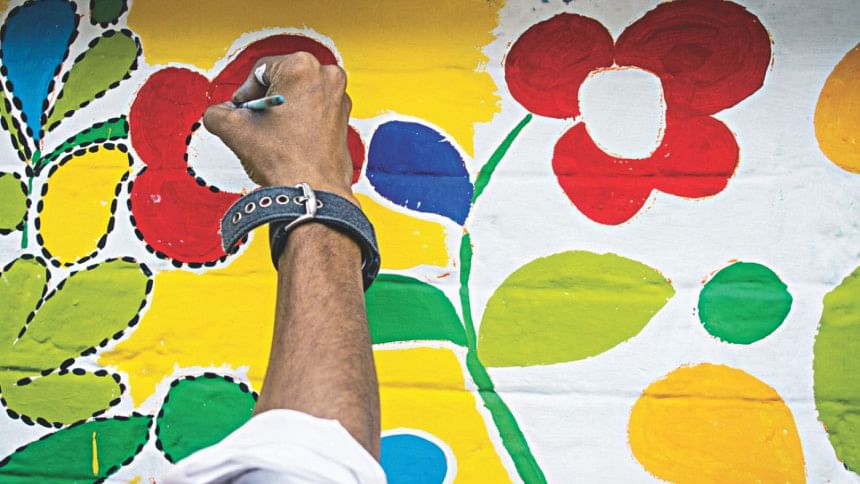Sankranti tales

Chaitra Sankranti is more than a 100-year-old celebration of marking the last day of the Bangla New Year. Although the festival is mostly observed in rural parts of the country, in recent years it has also been adopted into the urban lifestyle.
The festivities of the last day of the Bangla year are supposedly more colourful than Pahela Baishakh itself. In rural areas the celebrations are usually week long and include melas where traditional hand- made toys and handicrafts, as well as different kinds of sweets are sold like batasHa, khoi, sweets and murki.
In many places around Dhaka, Chaitra Sankranti is celebrated through organising fairs, pitha melas, music events and other festivities. Coincidentally it is on the eve of Pahela Baishakh that we see Charukala students working tirelessly, making crafts for the Mangal Shobhajatra and on alpanas around the Dhaka University areas, and Manik Mia Avenue roads in preparation of the next day.
Over the years, the night of Chaitra Sankranti for Dhakaites has become a time of celebrations and excitement. Traditionally this is the day when most businesses close their account books and prepare to open a new one but many are unaware that this day is also considered to be an auspicious one.
Like all other things in Bengali traditions and culture, the food consumed during this day is also very particular. According to working mom Srabonti Dutta, "the ideology is to consume a lot of green, bitter and leafy vegetables and also turmeric (high in antioxidants) in order to prepare for the coming days' celebration and feasts. Dishes consisting of various kinds of shakh, neem and korolla is cooked. Neem is consumed for two reasons; tender neem leaves are available during this time and taste really good when fried and it also is believed to be a good antiseptic to pox germs. Kacha aamer tok is also a very popular dish."
For Hindus, the celebrations include a Charak Puja and the preparation of delicacies such as chhatu and khoi-er murki.
Pahela Baishakh is synonymous to our Bengali identity. A day when people from all walks unite to ring in the new year. Naturally the eve to follow the new dawn, deserves a celebratory bidding to wash awaythe good, bad and all things in between of the past year. Until the next Baishakh… here's to Chaitra Sankranti 1424.
Photo: Shahrear Kabir Heemel

 For all latest news, follow The Daily Star's Google News channel.
For all latest news, follow The Daily Star's Google News channel. 








Comments